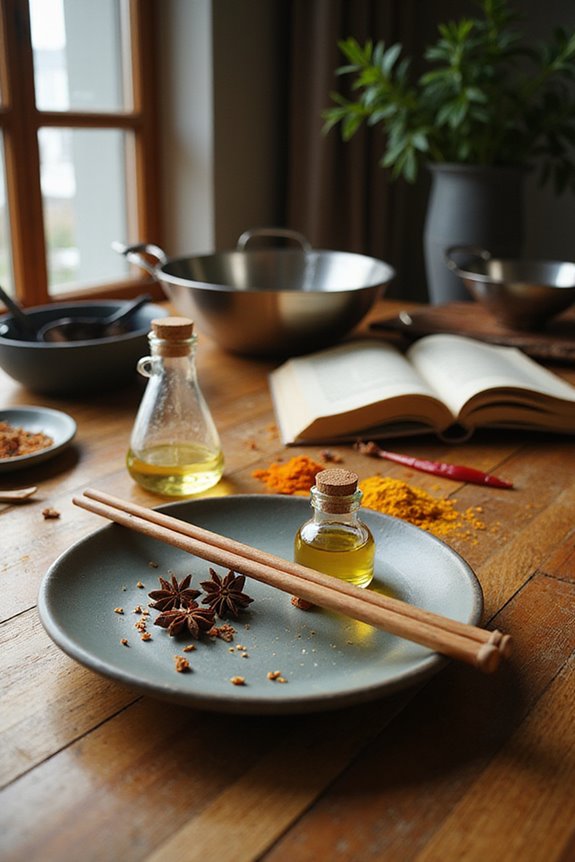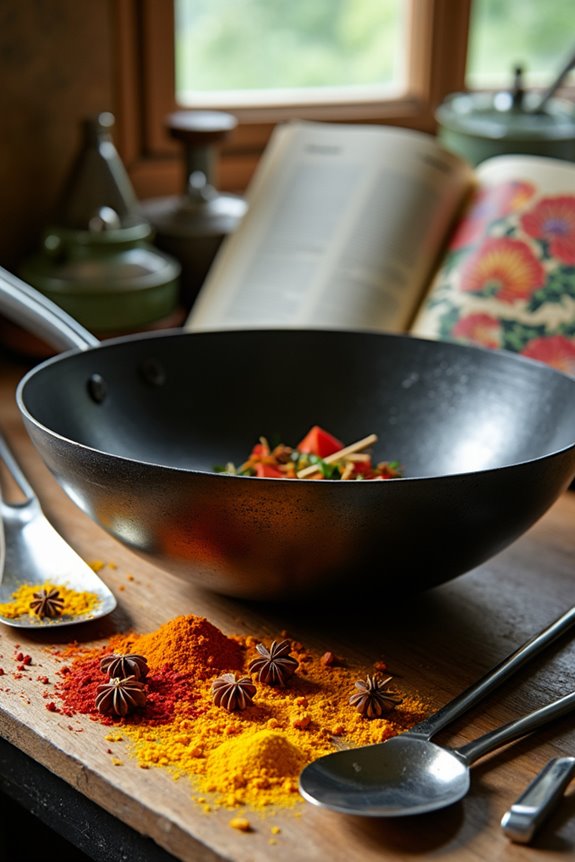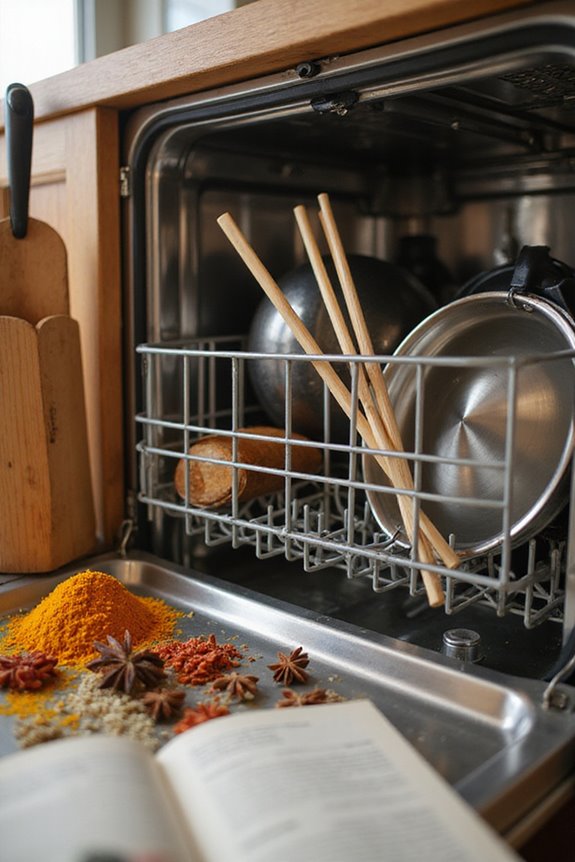Oiling our wooden chopsticks is a delightful way to keep them in top shape! First, we’ll use food-safe mineral oil or a mix with beeswax. Apply it with a clean cloth in gentle circles—less is definitely more! After a bit, we simply wipe away excess oil and let them rest for a couple of hours. Remember, a little care goes a long way, and soon, we’ll be ready for our next magical meal together! For even more tips, stick around!
Key Takeaways
- Choose a food-safe oil, such as mineral oil or walnut oil, for optimal protection and safety.
- Clean your chopsticks thoroughly before oiling to avoid trapping food particles.
- Apply a small amount of oil with a clean cloth in gentle circular motions.
- Wipe off any excess oil after a few minutes and let the chopsticks rest for 1-2 hours.
- Regularly oil your chopsticks, especially if you notice wear or fading, for long-lasting use.
Importance of Oiling Wooden Chopsticks
When we think about taking care of our delightful wooden chopsticks, oiling them is a must-do—and not just because it sounds fancy! First off, oiling helps keep our chopsticks moist, preventing them from drying or cracking. We want them to last, right? Plus, that magical oil creates a barrier, lowering the chance of bacteria and mold ruining our culinary adventures.
Here’s why we shouldn’t skip this step:
- Health Benefits: Oiling promotes hygiene by keeping moisture at bay.
- Environmental Conservation: Maintaining our chopsticks reduces the need for disposable utensils. Additionally, using sustainable bamboo products aligns with eco-conscious living and supports a healthier planet.
Best Oils for Wooden Chopsticks
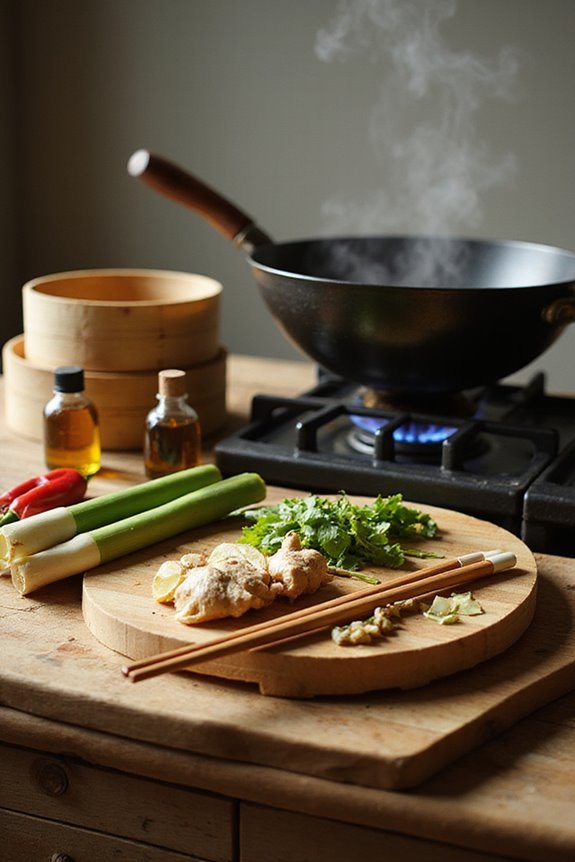
Choosing the right oil for our beloved wooden chopsticks can feel like a magical quest in the kitchen, especially since each oil brings its own delightful benefits. Here are some oil types to evaluate:
- Olive and Canola Oil: These food-based oils are easy to find but can become sticky.
- Walnut Oil: This one dries nicely, offering great protection without going rancid.
- Tung Oil: A traditional favorite, it hardens beautifully, creating a water-resistant barrier.
- Mineral Oil: Odorless and tasteless, it’s an easy-to-use, food-safe option!
Additionally, keeping your chopsticks in top shape can enhance your dining experience, especially when using high-quality disposable bamboo chopsticks, which provide a smooth, splinter-free experience. Each oil has unique oil benefits, but remember to wash your chopsticks regularly. Enjoy your cooking adventures, and may your chopsticks always feel like a treasured part of the family!
When to Oil Your Chopsticks
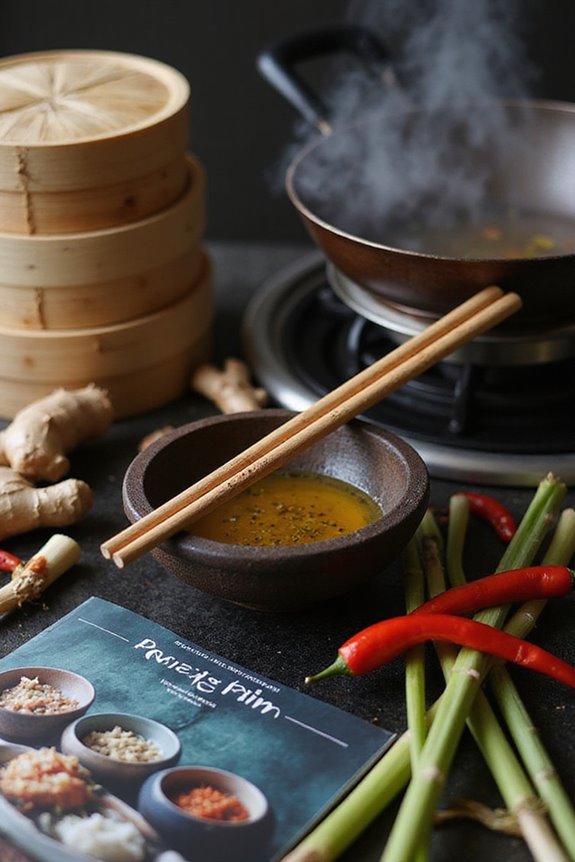
Oiling our beloved wooden chopsticks isn’t just a chore; it’s a delightful way to keep them happy and healthy! Let’s explore when to pamper our chopstick types with some essential oil. If we spot any whitening or dryness, it’s time for oiling! We should also pamper them after a few weeks of regular use or meals—especially in humid or dry climates. Here’s a quick checklist:
- Visible wear or fading? Oiling time!
- Feeling rough or splintering? We can’t ignore that!
- Using them frequently? Monthly oiling works wonders! Additionally, maintaining wooden chopsticks properly ensures they remain resistant to mold and stains.
How to Apply Oil Effectively
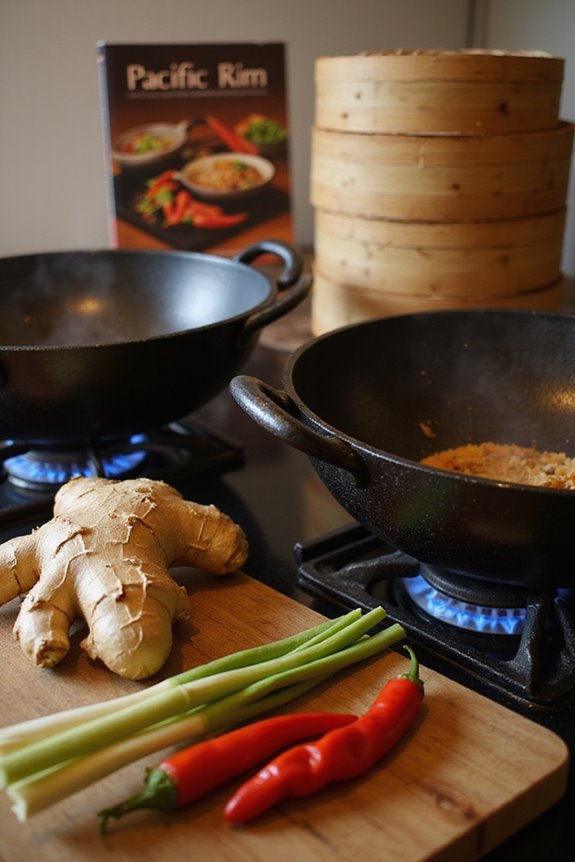
Applying oil to our wooden chopsticks can feel like a delightful craft project that not only nourishes our kitchen tools but also helps us create a rhythmic cooking experience! Let’s explore the essentials of chopstick care.
- Choose Our Oil: Grab food-safe mineral oil or a mineral-oil and beeswax blend.
- Apply With Care: Using a clean cloth, rub the oil in a gentle circular motion along the chopsticks, focusing on the tips.
- Don’t Overdo It: Less is more, so let’s wipe away any excess oil after a few minutes.
- Rest for Best Results: Let our chopsticks sit for 1-2 hours to soak in the oil and achieve that magical shine! Utilizing proper maintenance techniques, similar to how we care for stainless steel chopsticks, will ensure their longevity.
With these oiling techniques, our chopsticks will thank us during every meal!
Cleaning Your Chopsticks Before Oiling
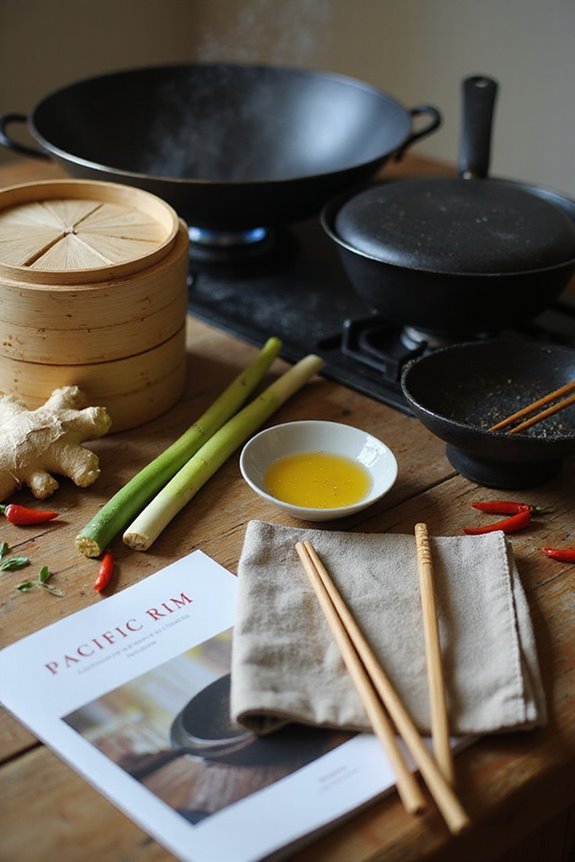
Before we plunge into the delightful world of oiling our wooden chopsticks, keeping them clean is a must! We can start by rinsing our chopsticks under running water right after use to prevent food residue from hardening. A little mild dish soap and warm water do wonders for residue removal—just be gentle with a soft sponge!
For stubborn stains, a baking soda paste or a dip in diluted vinegar can work like magic. Remember to avoid abrasive pads; they just ruin our beautiful wooden friends! After cleaning, let’s dry our chopsticks immediately and store them properly. With these cleaning methods up our sleeves, we’re ready to give our chopsticks the oil treatment they deserve! Let’s keep our kitchen tools happy! Additionally, using high-quality natural bamboo materials for chopsticks can enhance their durability and overall performance.
Maintenance Tips for Wooden Chopsticks
When it comes to keeping our wooden chopsticks in tip-top shape, regular maintenance is key! To enhance chopstick longevity, let’s remember the oiling frequency. Ideally, we should oil our chopsticks every 1 to 2 months—think of it as giving them a delightful spa day! Here’s how we can do it:
- Use food-grade mineral oil or beeswax that’s safe for food.
- Clean and dry our chopsticks thoroughly before oiling.
- Lightly sand rough spots to keep them smooth.
- Apply oil with a soft cloth, rubbing along the grain.
After oiling, let’s store them in a dry place and avoid humidity. By sticking to this routine, we’ll be sure our chopsticks always look and feel magical! Additionally, consider applying oil regularly to protect the wood’s surface and prevent damage from moisture.
Common Mistakes to Avoid
It’s easy to make mistakes while caring for our beloved wooden chopsticks, but avoiding these pitfalls can keep them delightful and looking brand new! Let’s chat about some common mistakes in chopstick care:
- Using the Wrong Oil: Stick to food-safe oils! Non-food-safe options can ruin our eating experience.
- Excessive Oiling: A little goes a long way! Too much oil creates a greasy feel and attracts dust.
- Ignoring Cleaning: Always wash chopsticks before oiling; trapped food gets gross under the oil.
- Dishwasher Dilemmas: Skip the dishwasher! It can warp and crack our beloved chopsticks.
- Improper Storage: Let them dry properly. Storing oiled chopsticks too soon invites trouble.
Signs Your Chopsticks Need Oiling
Isn’t it magical how our wooden chopsticks can become like old friends in the kitchen? However, just like any friendship, they need a little care. Here are some signs your chopsticks need oiling to guarantee their chopstick longevity:
- Visible Cracks: Look for fine lines on their surface.
- Whitening: If they appear lighter, it’s time for some TLC.
- Looser Grip: A rough surface means they’re begging for oil.
Storing Wooden Chopsticks Properly
Taking care of our wooden chopsticks can feel like nurturing a delicate plant in the kitchen. Proper chopstick storage is essential for keeping them delightful and mold-free. Here’s how we can master this magical art:
- Use moisture absorbers like silica gel packets to combat humidity.
- Store them in dry, dark areas for ideal durability and to prevent discoloration.
- Avoid stacking to guarantee even drying—nobody wants soggy chopsticks!
Let’s keep them upright in ventilated holders for proper air circulation. This way, they’ll always be ready for our next culinary adventure. Remember, handling them with care guarantees they’ll last longer, making our cooking experiences even more enjoyable! Happy chopstick storage!
Frequently Asked Questions
Can I Use the Same Oil for Other Wooden Utensils?
When it comes to using the same oil for other wooden utensils, we’re all in the same boat! Mineral and tung oils work well across the board, but conditioning frequency may vary depending on usage.
Do I Need to Oil Chopsticks if They Are Rarely Used?
Even if we rarely use our chopsticks, we should still practice good chopstick maintenance. Regular oiling guarantees they’re protected, enhancing their lifespan and promoting hygiene, just like with any wooden utensil care we cherish.
How Long Should I Let the Oil Sit Before Wiping Off?
When we oil, we should let the oil sit for about 10-15 minutes. This drying time allows proper oil absorption, ensuring our wooden items remain protected and beautiful without sticky residue. Let’s enjoy caring for them together!
Can I Mix Different Oils for Conditioning Chopsticks?
Did you know that 90% of wooden utensil failures come from improper conditioning? We shouldn’t mix different oils for chopsticks without careful consideration; effective oil combinations enhance our conditioning techniques and guarantee longevity and safety for our cherished utensils.
Is It Safe to Use Flavored Oils for Chopping?
While flavored oil safety is a concern for kitchen use, we shouldn’t risk it. Oils absorb differently, and using neutral oils guarantees our utensils stay clean and safe without introducing harmful bacteria. Let’s prioritize safety together!

